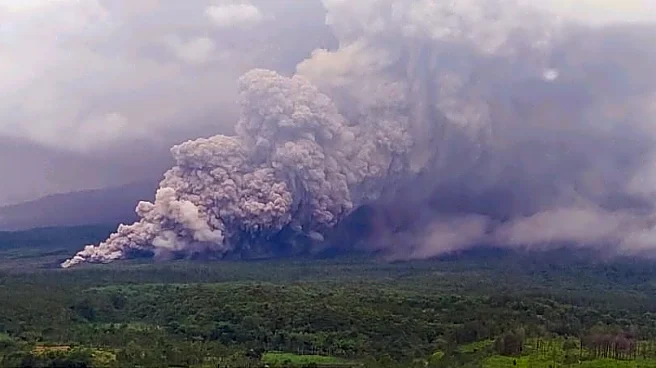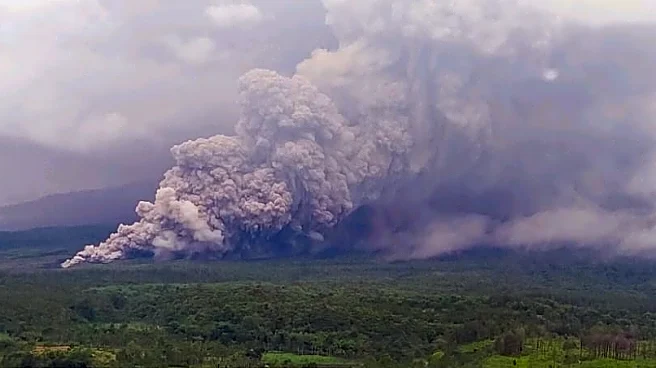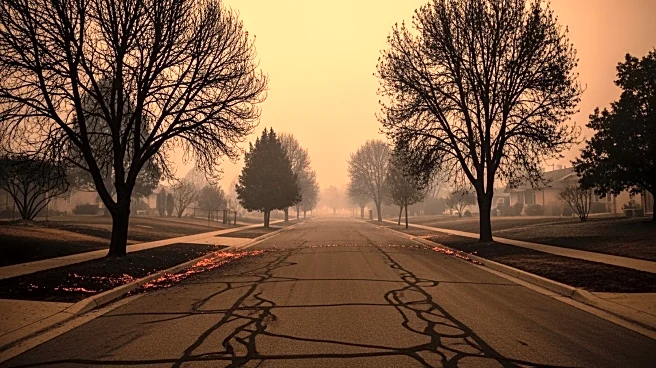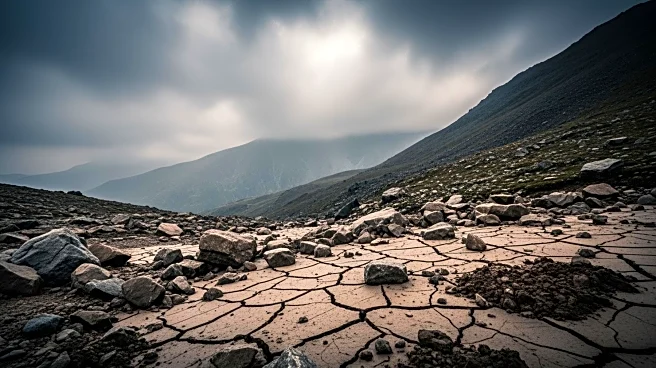What's Happening?
Indonesia's Mount Semeru, the highest peak on Java island, erupted, blanketing several villages with ash and prompting evacuations. The eruption led authorities to raise the alert level to the highest.
The volcano unleashed clouds of hot ash and a mixture of rock, lava, and gas, traveling up to 7 kilometers down its slopes. More than 300 residents in the most at-risk villages were evacuated to government shelters. The danger zone was widened to 8 kilometers from the crater, and people were advised to avoid areas along the Besuk Kobokan River, which is the path of the lava flow. Videos showed ash sweeping through a forested valley, and local media reported that authorities are struggling to rescue about 178 people stranded on the mountain.
Why It's Important?
Mount Semeru's eruption poses significant risks to nearby communities, transport routes, and aviation. Indonesia, with nearly 130 active volcanoes, is prone to such natural disasters due to its location on the Pacific 'Ring of Fire.' The eruption highlights the ongoing challenges faced by the country in managing volcanic activity and ensuring the safety of its residents. The evacuation efforts and alert level increase are crucial in preventing casualties and minimizing damage. The eruption also underscores the need for continuous monitoring and preparedness in regions prone to volcanic activity.
What's Next?
Authorities will continue to monitor the volcano's activity and adjust safety measures as needed. The evacuation efforts will persist, with local and national agencies coordinating to ensure the safety of residents. The stranded individuals on the mountain will be a priority for rescue operations. The government may also review and enhance its disaster preparedness and response strategies to better handle future eruptions. The situation remains dynamic, and further eruptions could lead to additional evacuations and safety measures.













